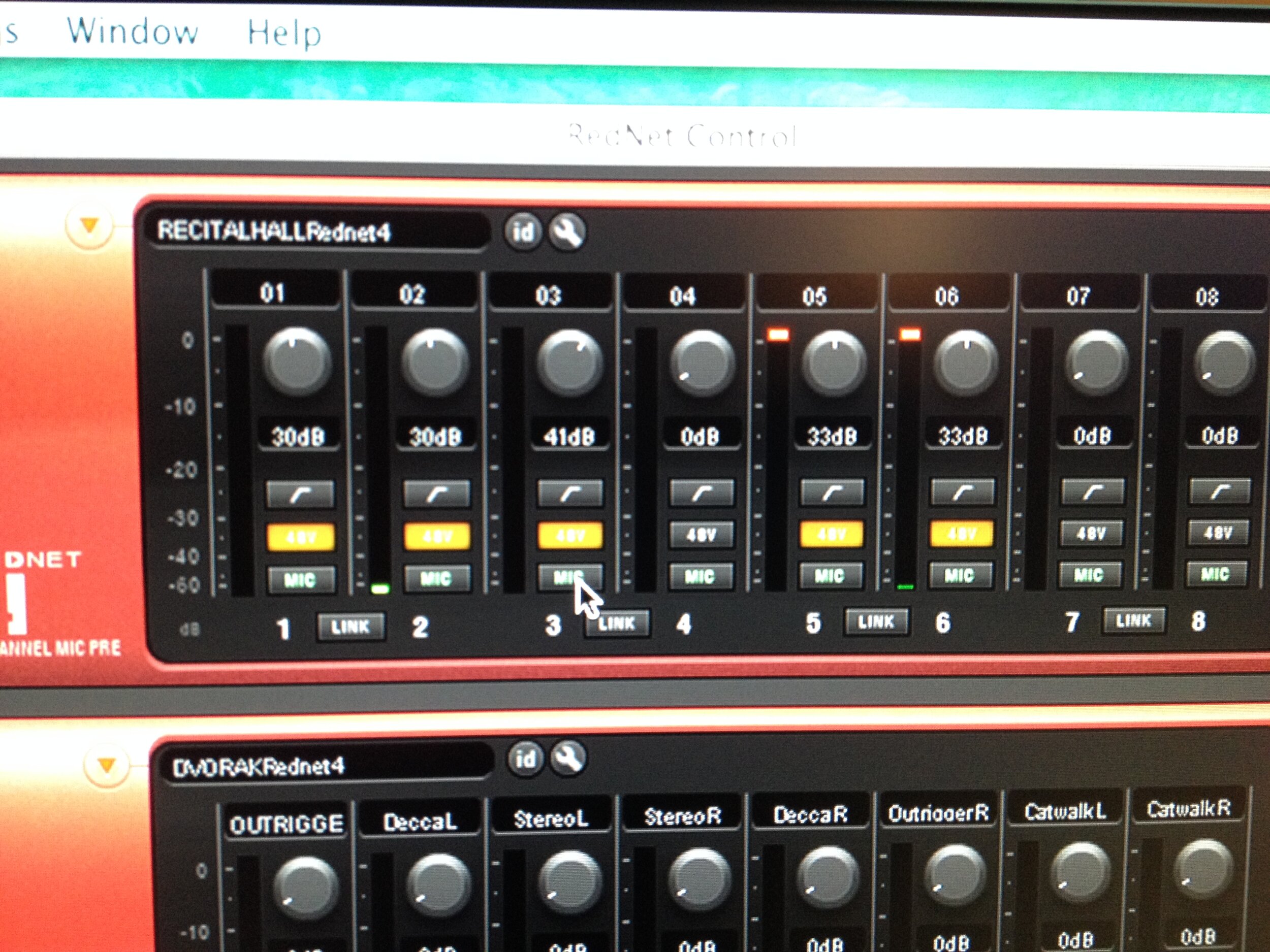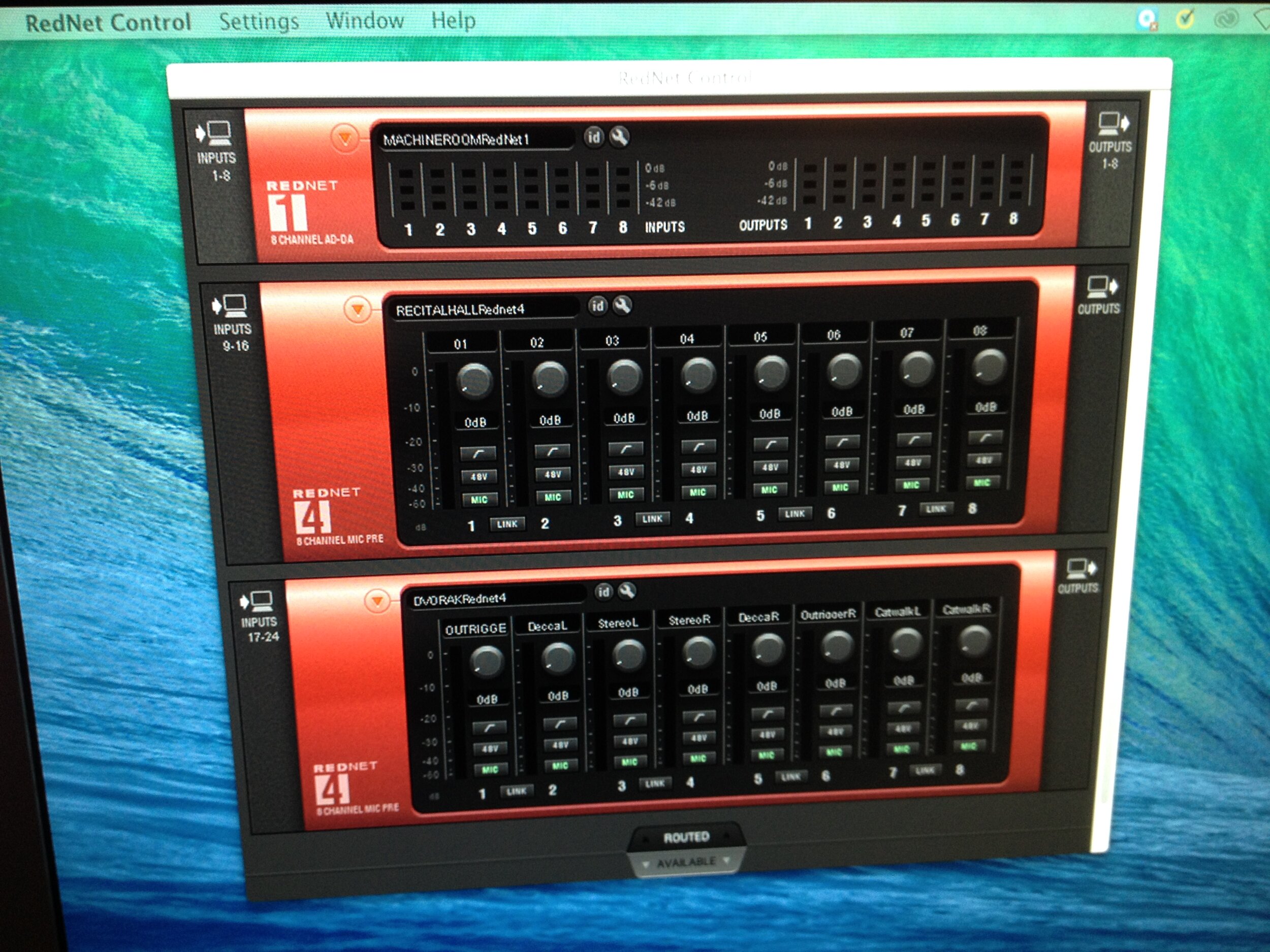Overview
I led a project to install a Dante network as the backbone of audio infrastructure throughout the Doudna Fine Arts Center at Eastern Illinois University. The network carries all audio within the center between all stages and front of house, recording studio, and anywhere connected by the building’s internal ethernet runs. With thousands of available devices now Dante compatible and video over IP with Dante AV, it laid the groundwork for future expansion for multimedia streaming, and distribution throughout the building, to rehearsal rooms, offices, practice rooms, lobbies, and green rooms.
About the Doudna Fine Arts Center
4 concert halls, one control room
2 halls are primarily music department venues, 2 halls are primarily theater department, but shared with music
Other considerations
Utilize existing racks, patch panels, etc. as much as possible
Previous system used ethernet, so cable runs were in place
Expandable
Manageable with existing staff: 1 full time, 1 part time, 2 student assistants
Streamline recording using flown microphone arrays in music-only halls
Problems/Requirements
Record all concerts, recitals
Improve sound quality of recordings
Simplify control of microphone preamplifiers
Simplify FOH patching
Eliminate noise issues in feeds to FOH
There were a few problems that necessitated moving to a Dante network. First, was the sound quality of recordings. The previous recording signal chain; High-end microphones, mic preamplifiers, analog to digital conversion (A/D), and audio network, resulted in a somewhat clinical, sterile recorded sound. It was extremely clean, but it was cold, and somewhat harsh. We needed some character and warmth in the mic pres, and definitely needed better sounding A/D. Next, the mic pres in the previous solution were remotely controllable, but only through a Windows-based application. The studio ran on a Mac Pro, and we had to run a Windows virtual machine just to control the preamps. Third, it was time to move to a digital mixing console at FOH to eliminate racks full of outboard gear, failing channel strips and poor/non-existent service from the previous console’s manufacturer, and noise/hum/buzz gremlins in the miles of copper, massive multi-pin connectors, and 56-channel fanouts.
Existing resources
The previous system used ethernet cable runs connecting the studio and many points throughout the building, so no new cable infrastructure was needed. Great! Additionally, hall A & B had existing wall-mounted racks which housed patch panels and the old networking equipment. And we had a rolling, mixer-top rack that was used in halls C & D, which could house Rednet units.
Design Process
Audio which enters the Dante network at any point can be accessed at any other point. Signals entering the network in a Dante interface onstage can be accessed in the recording studio, front of house (FOH), monitor world, streaming world, and anywhere else you’d like it to go. For this, the first step, we would be sending signal from each of the four halls to the recording studio, and a new Dante-enabled mixer (Yamaha CL5) at FOH in the largest hall.
Solutions
Hall A, B rack configuration
Halls A, B are primarily used by the music department, and have permanently installed racks, each with one Rednet 4, oneRadial Engineering OX 8 passive mic splitter, and a gigabit ethernet switch. The Rednet 4 has eight microphone preamps, which cover the flown main recording array (up to six mics) and stereo hall mics in Hall A, and the two stereo mics in Hall B.
Rolling mixer rack
In halls C and D, which are shared by the theater and music departments, mic signals enter the network via a rolling mixer rack which contains two Rednet 4, two Radial Engineering OX 8 passive mic splitters, and one gigabit ethernet switch, for 16 channels. This rack can be used anywhere in the building that has ethernet connecting to the recording studio, which is pretty much everywhere, including front of house, lobbies, rehearsal studios, practice rooms, offices, and meeting rooms. Additionally, for events in halls A & B requiring more than eight recording channels, this rack can be rolled in and plugged in to one of the many ethernet jacks around the building, for a total of 24 channels of Dante mic pres.
Results
The results have been great. We have instant access to our flown microphone arrays in the two music-only halls, and 16 channels of microphone inputs in the other halls after patching a single network cable. Dante is easy to configure, totally reliable, and the Focusrite mic pres are a better match for the microphones and halls than our previous (though very high-end) mic pres. That in combination with the Rednet conversion, the whole signal chain sounds noticeably better than the previous solution. The mic pres are remotely controllable without running a Windows virtual machine within Mac OS.
Future Expansion
This was the first step in a totally Dante-based AV solution for this building. We had limited resources, so the focus was on recording and FOH in one hall. In the future, Dante will carry audio from FOH to the amp rooms or powered loudspeaker arrays, talkback from the studio, video feeds for streaming, and more.


